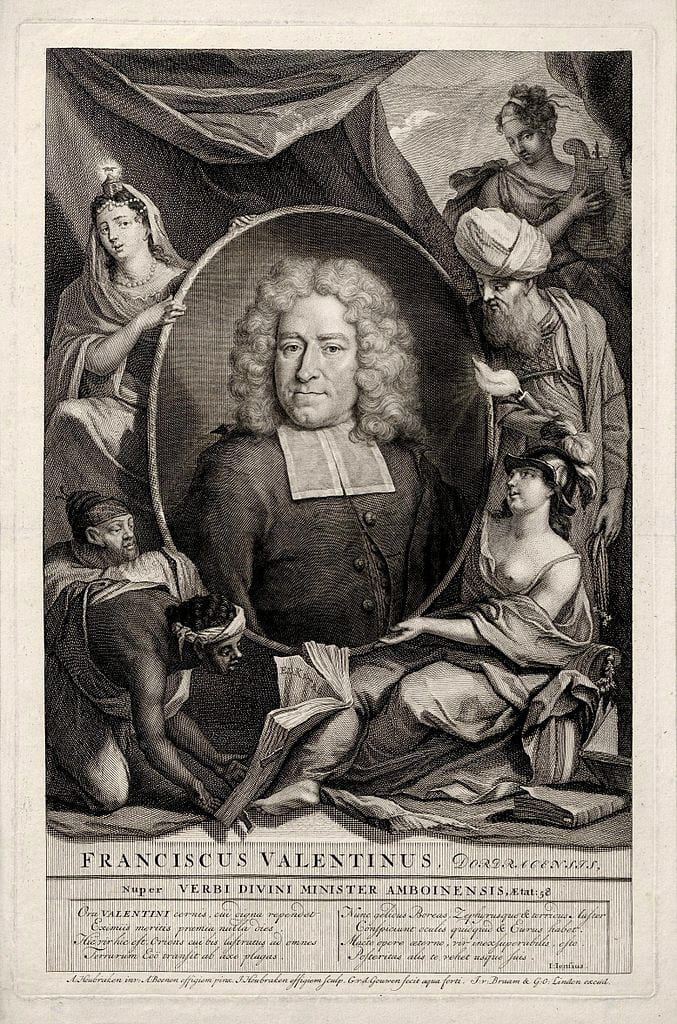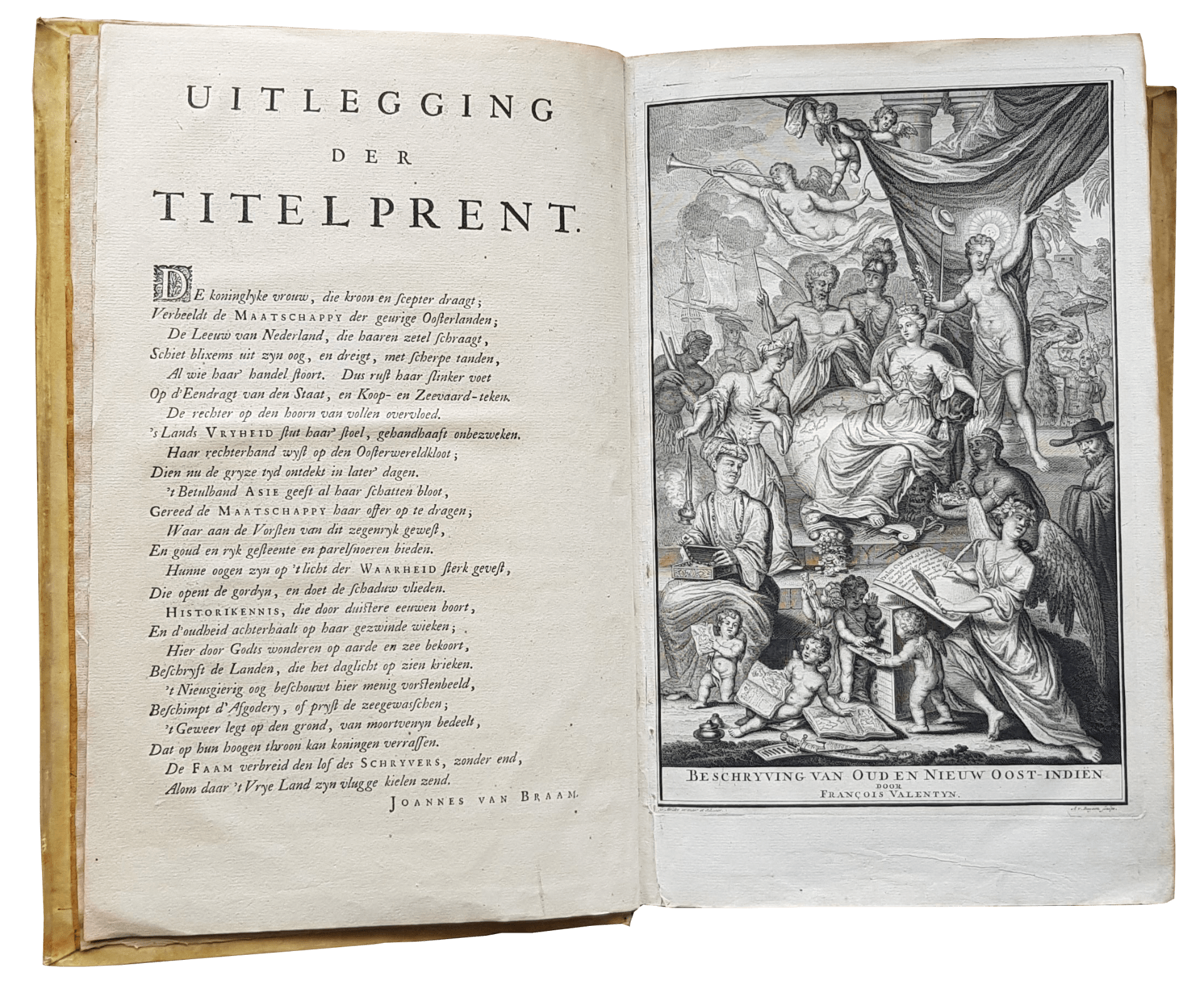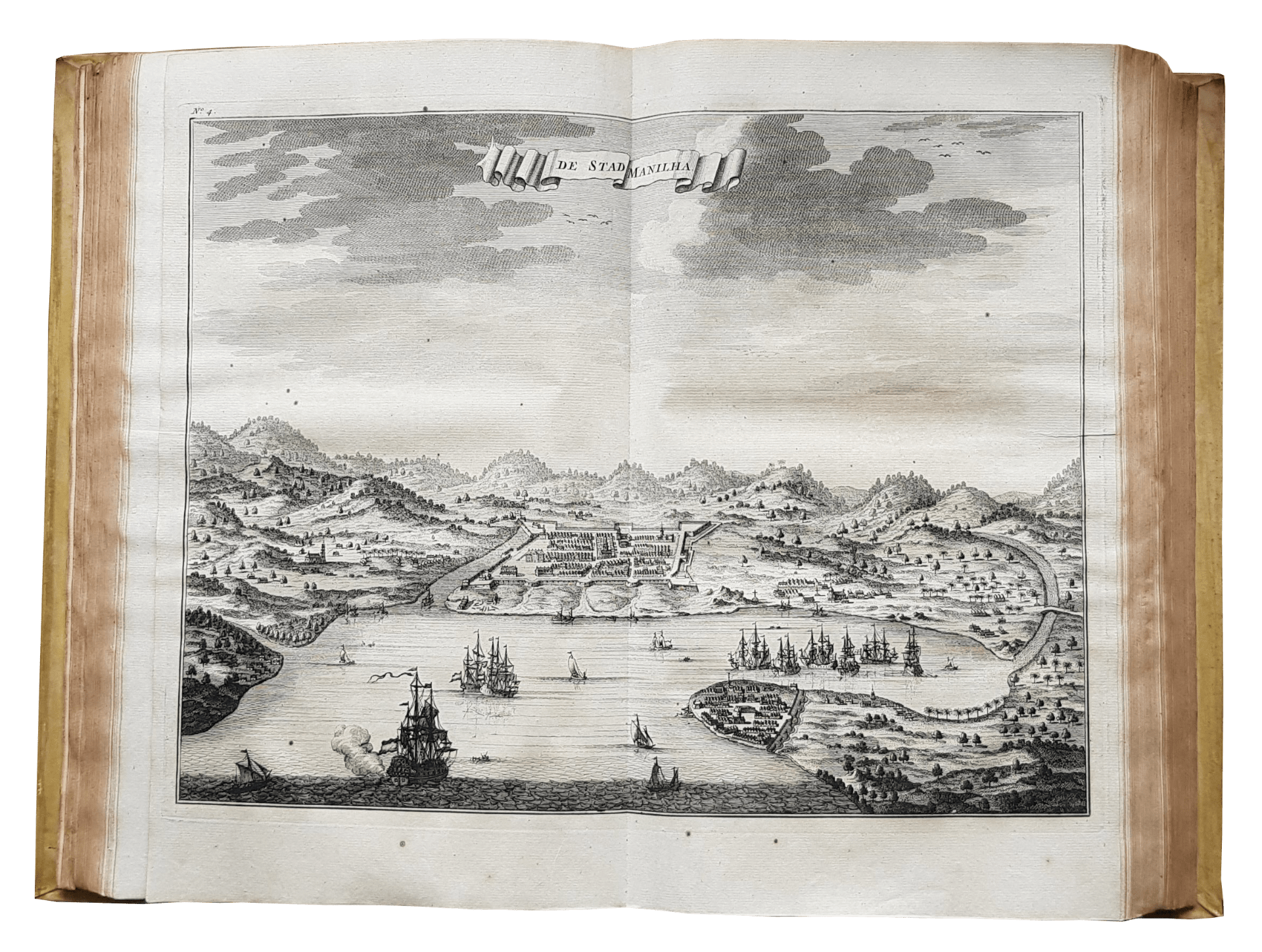|
Francois Valentijn (1666-1727) was a Dutch Protestant minister who arrived in the Dutch East Indies in 1685 in the employ of the Dutch East India Company where he served mainly in Ambon. He returned to Holland in 1694. After a break of ten years, he returned to the Indies in 1705 to serve as army chaplain on an expedition in eastern Java. Eight years later, he finally returned to Holland. He spent the remaining years of his life working on his monumental Oud en Nieuw Oost-Indiën (“Old and New East-India”), playing music and indulging in a popular pastime of the day: “collecting and displaying exotic curiosities such as shells, molluscs and coral |
 |
Oud en Nieuw Oost-Indiën, a work of five parts and published in eight volumes, describes the history of the Dutch East India Company and the countries of the Far East. It contains over one thousand engraved illustrations and some of the most accurate maps of the East Indies of the time. Valentijn was fortunate to see his work published as the Dutch East India Company would normally bar former employees from publishing anything about the region or their colonial administration. He also had the rare opportunity to correct the galley proofs, and the entire work appeared eight months before his death in August 1727. His work was a commercial success.


While Valentijn’s maps and diagrams were much valued, scholars have questioned the originality of his writing due to his penchant in using the work of others without due recognition. Nevertheless, “given his writing style, diction and aptitude for narrative”, he has been rated as one of the greatest Dutch prose writers of the time.


